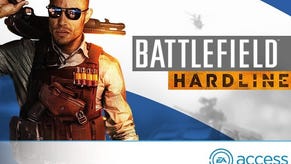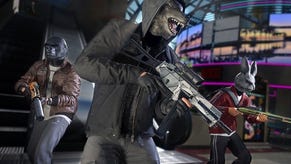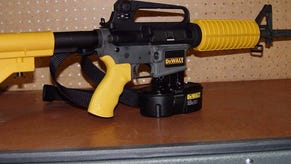Performance Analysis: Battlefield Hardline beta
Digital Foundry reveals PS4 and Xbox One metrics and impressions.
Last summer's PS4 Battlefield Hardline beta disappointed us with its sub-par frame-rate and a notable lack of visual refinements over Battlefield 4. Surely we should expect more from a triple-A title based on a key franchise? With a new beta released this week, we were eager to see what improvements had been made, based on code that should fall closely into line with the performance profile of the final game, due next month. We've already taken a look at the PC version running on a high-end PC, and it runs as expected but what about the console versions? Have things improved?
Well, the 720p/900p rendering set-ups for Xbox One and PS4 respectively are a genuine disappointment, but the good news is that performance has increased significantly since last year's E3 beta, which often dipped below 40fps in taxing scenes. The big revelation on playing this new code is that overall frame-rates are significantly improved: the urban map from last year's sampler returns, delivering much better performance with minimal dips in frame-rate even during the massive environmental destruction episodes. The new modes all seem to operate very smoothly, maintaining a stable 60fps throughout most of the match.
It's only when returning to Battlefield's classic 64-player Conquest Large mode that familiar problems begin to crop up. Jumping into a full scale battle across the game's new Dust Bowl map - closest in scale to Battlefield 4's larger stages - demonstrates plenty of performance hitches and dips on both consoles, more noticeable on Xbox One but still an issue on PlayStation 4. The prolific use of alpha transparency effects appears to contribute to the issues, but on top of that, it seems that the increased player count causes its own impact to frame-rate too - perhaps because of the increased CPU load.
Alternative analysis:
When it comes to assessing the final game, we're planning on comparing performance across multiplayer modes with varying player counts. Our initial tests with the beta suggest the possibility that those looking for best performance may improve matters simply by opting out of the Conquest Large mode. However, as things stand, the 64-player game variation on sizeable maps does seem to produce an experience with a similar level of consistency to Battlefield 4.
We were fortunate enough to take a look at the PC beta prior to its launch and it's definitely looking like the front runner here, though out of controlled conditions we did notice some issues on a Core i5 3570K/GTX 780 test rig. Even at the highest settings we were able to hit a mostly solid 60fps but there was an odd jumpiness that persisted regardless of settings, and our normal frame-rate stabilisation tools weren't able to clean up. It's a curious issue, and one we hope won't manifest in the final code. For the record, we didn't see the issue manifest on EA's i7 4770K/GTX 980 set-up.
Looking beyond performance, overall image quality remains virtually unchanged from Battlefield 4 - a situation not helped by the reduced 720p/900p resolution set-up. It's worth stressing that pixel count is only one component in overall image quality, but matters certainly aren't helped by the chosen anti-aliasing solution, which leaves us with plenty of blur and chunky pixel pop throughout each scene. In particular, we remain baffled at the lack of a vector 'ribbon' solution to power lines as their appearance here is distracting due to severe aliasing and sub-pixel break-up. The vector ribbon technique involves drawing these elements in 2D, completely solving the issue and producing no visible aliasing whatsoever - as you can see in Grand Theft Auto 5 and indeed EA's own Need for Speed: Hot Pursuit. Hardline's image quality is further compromised by sub-par anisotropic filtering, which leaves detailed textures looking a bit muddy at a distance - the same issue seen in Battlefield 4.
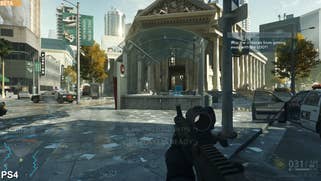


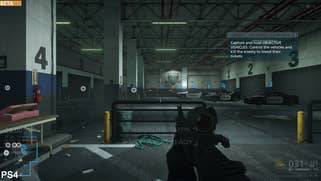
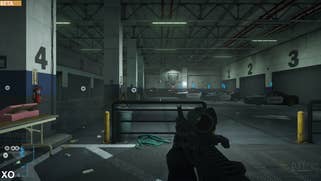
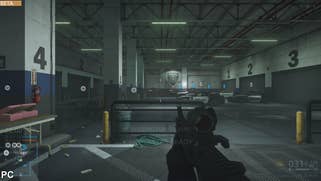


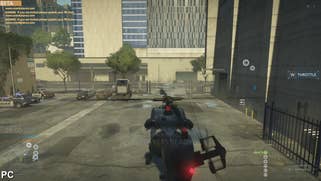


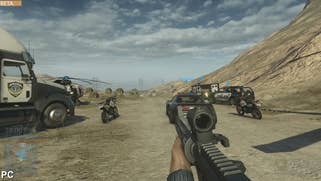
Visceral has made much great use of screen space reflections in conjunction with cubemaps to provides additional depth to each scene. Everything from wet pavement to glossy building facades showcases the effect - sometimes to its detriment. Screen space information changes more rapidly with horizontal camera pans than it does with vertical, resulting in wall reflections showing lots of disappearing pixels as you play. It proves a bit distracting at times as reflections fade in and out constantly as you play.
The overall takeaway here is that the Hardline beta looks and feels very much like its predecessor, and we can't shake the lingering sense that we should be seeing substantial improvements to both image quality and performance in a game launching over 15 months after its predecessor. Of course, Visceral Games itself isn't responsible for the Frostbite engine - in fact, Hardline is the developer's first game built on technology that isn't its own. We know that radical enhancements are being made to the engine behind the scenes, but it seems likely that we won't see these deployed until the next DICE first-person shooter arrives on the scene later this year.
While hopes for a substantial technological evolution have been tempered with the release of this beta, we're still looking forward to seeing the final game - particularly on PC, where the scalability of the Frostbite 3 engine remains capable of some beautiful results. As things stand, it seems that console owners can at least expect performance on par or better than Battlefield 4, with the new game modes in particular potentially offering a more stable experience due to their slightly more constricted design. We'll have in-depth coverage of Visceral's work closer to the March 20th European release date.






